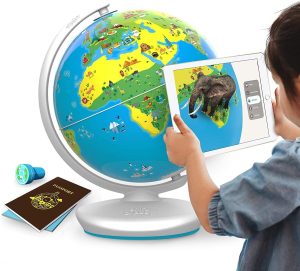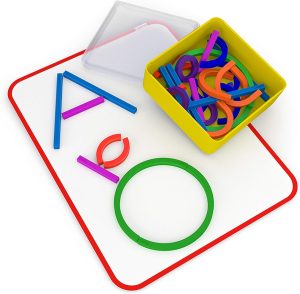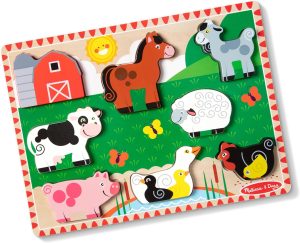
Gaming systems for kids offer engaging and age-appropriate entertainment that helps develop cognitive and motor skills. Introducing kids to gaming systems at a young age can have numerous benefits for their growth and development.
These devices provide a fun and interactive way for children to learn new concepts, enhance problem-solving abilities, and improve hand-eye coordination. Additionally, gaming systems designed for kids often feature parental controls and educational games that promote learning in a safe and controlled environment.
With a wide range of gaming systems available, parents can choose the best option based on their child’s age, interests, and needs. We will explore some of the top gaming systems for kids, highlighting their features and benefits to help parents make an informed decision.
Choosing The Right Gaming System For Kids
When it comes to choosing a gaming system for kids, it’s essential to consider their age, interests, and educational needs. With the plethora of options available today, finding the perfect gaming system can seem daunting. However, by keeping a few key factors in mind, you can make an informed decision that will provide your children with hours of fun and educational entertainment.
When it comes to choosing a gaming system for kids, it’s essential to consider their age, interests, and educational needs. With the plethora of options available today, finding the perfect gaming system can seem daunting. However, by keeping a few key factors in mind, you can make an informed decision that will provide your children with hours of fun and educational entertainment.
Factors To Consider When Choosing A Gaming System For Kids
When selecting a gaming system for your child, several factors should be taken into account:
- Safety: The safety of your child should always be a top priority. Look for gaming systems with parental control features that allow you to set restrictions on content and monitor playtime.
- Content: Consider the types of games available on the system. Look for age-appropriate, educational, and fun games that align with your child’s interests. Make sure to check ratings and reviews to ensure that the content is suitable.
- Portability: If your child enjoys gaming on the go, consider a handheld gaming system that offers portability and convenience. These systems are perfect for long car rides or trips.
- Multiplayer Options: Some gaming systems offer multiplayer features that allow children to play with their friends, enhancing social interaction and cooperation. Consider if this is an important factor for your child.
- Budget: Lastly, keep your budget in mind. Gaming systems can vary in price, so it’s important to set a budget and find a system that offers the best value for your money.
Play Shifu Educational Globe for Kids: Great Essential Games for Kids:
About this item:
Color: Blue
Brand: Shifu
Material: Plastic
Map Type: World Map
Item Weight: 1.2 Kilograms

Photo: Amazon
The Best Gaming Systems For Different Age Groups
Every age group has unique needs and interests when it comes to gaming. Here are some recommendations for the best gaming systems for each age group:
| Age Group | Recommended Gaming System |
|---|---|
| 3-6 years old | Nintendo Switch Lite |
| 7–12 years old | Xbox One S |
| 13+ years old | PlayStation 5 |
Nintendo Switch Lite for 3-6 years old:
About this item:
Platform: Nintendo Switch
Input Device: Gaming Console
Brand: Nintendo
Model Name: Nintendo Switch Lite, Turquoise
Color: Turquoise

Photo: Amazon
Xbox One S for 7–12 years old:
About this item:
Connectivity Technology: Wireless
Wireless Technology: Bluetooth
Buttons & Controls: Textured Triggers And Bumpers Hybrid D-Pad Dedicated Share Button Analog Joysticks
Platform Supported: Xbox Series X
Platform Supported: Xbox Series S

Photo: Amazon
PlayStation 5 for 13+ years old:
About this item:
Brand: OIVO
Connectivity Technology: USB
Connector Type: USB Type C
Compatible Devices: Game Consoles
Compatible Phone Models: game console
Included Components: Charging station
Special Feature: Fast Charging, Charging Indicator
Color: White
Input Voltage: 5 Volts
Mounting Type: Tabletop Mount

Photo: Amazon
These recommendations are based on the gaming systems’ available games, features, and suitability for each age group. However, it’s essential to remember that every child is unique, so be sure to consider their individual preferences and skill levels when making a final decision.
Understanding The Benefits Of Fun And Educational Entertainment
The right gaming system can provide more than just entertainment; it can also offer educational benefits. Research has shown that certain video games can improve problem-solving skills, enhance creativity, and promote critical thinking. By selecting age-appropriate games that also offer educational value, you can ensure that your child is engaged in a productive and enjoyable learning experience.
In conclusion, choosing the right gaming system for kids requires careful consideration of factors such as safety, content, portability, multiplayer options, and budget. By taking these factors into account and understanding the specific needs of each age group, you can select the perfect gaming system that will provide hours of fun and educational entertainment for your children.
The Importance Of Age-appropriate Games
In the digital age, gaming systems have become increasingly popular among kids. However, as parents, it is essential to consider the content that our children are exposed to. Age-appropriate games play a vital role in shaping their overall development. These games are specifically designed to cater to a child’s cognitive abilities, emotional maturity, and social interaction skills. In this article, we will explore why age-appropriate games matter for kids, understand the different content ratings and their significance, and provide tips on selecting games that match your child’s developmental stage.
Why Age-appropriate Games Matter For Kids
Choosing age-appropriate games for your child is crucial for several reasons. Let’s delve into the importance of considering age suitability:
- Promotes Healthy Cognitive Development: Age-appropriate games are designed to stimulate a child’s cognitive abilities by challenging their problem-solving skills, critical thinking, and creativity. These games gradually introduce complex tasks, ensuring that children build and expand their cognitive capabilities at an appropriate pace.
- Prevents Exposure to Inappropriate Content: Games that are not age-appropriate may contain explicit violence, sexual content, or mature themes that can negatively impact a child’s understanding and perception of the world. By selecting games suitable for their age, parents can protect their children from exposure to content that is not suitable for their developmental stage.
- Enhances Social Skills: Age-appropriate games often include multiplayer features that enable kids to interact and collaborate with their peers. This fosters the development of crucial social skills such as teamwork, communication, and problem-solving in a safe and controlled environment.
- Builds Emotional Resilience: Games tailored to a child’s age group help them navigate and understand various emotions. They can provide opportunities for children to learn how to handle success, failure, and adversity, allowing them to develop emotional resilience and cope with real-life challenges.
The Different Content Ratings And Their Significance
To ensure that games are appropriate for different age groups, the gaming industry employs content rating systems. Here are the most common content ratings and what they signify:
| Content Rating | Description |
|---|---|
| EC (Early Childhood) | This rating indicates that the game is suitable for young children aged three and older. It usually involves no or minimal violence, has simple gameplay mechanics, and encourages educational activities. |
| E (Everyone) | This rating signifies that the game is suitable for players of all ages. It may contain mild cartoon violence or infrequent use of mild language but does not depict any explicit or intense content. |
| E10+ (Everyone 10 and older) | This rating denotes that the game is suitable for players aged ten and older. It may contain more cartoon, fantasy, or mild violence, mild language, and minimal suggestive themes. |
| T (Teen) | These games are intended for players aged thirteen and older. They may include violence, suggestive themes, crude humor, and light or infrequent use of strong language. |
| M (Mature) | This rating suggests that the game contains content suitable for players aged seventeen and older. Mature games may contain intense violence, strong language, and explicit or suggestive themes. |
How To Select Games That Match Your Child’s Developmental Stage
Choosing games that align with your child’s developmental stage is vital for their overall growth. Here are some tips to help you select age-appropriate games:
- Read Game Descriptions and Reviews: Before purchasing or allowing your child to play a game, read the provided descriptions and reviews to gather insights into its content, gameplay mechanics, and suitability for your child’s age.
- Research Content Rating: Check the content rating of the game and understand what it signifies. Ensure that the rating matches your child’s age and developmental stage.
- Consider Educational Value: Look for games that provide educational benefits such as problem-solving, creativity, or language development.
- Monitor Gameplay: Regularly engage with your child during gameplay to understand the content and its impact on their behavior and development. This allows you to assess if the game aligns with their age appropriately.
- Seek Recommendations: Ask other parents or educators for game recommendations suitable for your child’s age group. Their experiences and insights can be invaluable in making informed decisions.
Fun And Educational Games For Kids
Gaming systems for kids have become more than just a form of entertainment. They can also offer educational value and help children develop important skills while having fun. Whether your child is a preschooler, in elementary school, or even in middle school or high school, there are engaging games available to suit their age and learning level. In this blog post, we will explore the top fun and educational games for kids in each age group. Let’s dive right in!
Top Fun And Educational Games For Preschoolers
Preschoolers are at a crucial stage of development where they take in information rapidly. Fun and educational games can help them learn early literacy skills, problem-solving skills, and basic math concepts. Here are some top games:
ABC Adventure For Preschoolers:
- ABC Adventure: This game introduces kids to the alphabet by incorporating interactive learning activities and colorful animations. It helps develop letter recognition and phonetic skills.
About this item:
Brand: Osmo
Material: Silicone, Plastic
Genre: Technology, Educational
Number of Players: 1-4
Batteries Required: No

Photo: Amazon
Number Train For Preschoolers:
- Number Train: Designed to teach numbers and counting, this game can engage preschoolers with its bright visuals and interactive counting exercises.

Photo: Amazon
Puzzle Play For Preschoolers:
- Puzzle Play: Puzzles are excellent for developing problem-solving skills. Puzzle Play offers a variety of age-appropriate puzzles that can help improve spatial awareness and cognitive abilities.
About this item:
Brand: Melissa & Doug
Puzzle type: Jigsaw
Manufacturer Minimum Age (MONTHS): 24.0
Number of Pieces: 8
Product Dimensions: 8.2 L x 11″ W

Photo: Amazon
Engaging Games For Elementary School Kids
Elementary school kids require games that stimulate their growing minds and expand their knowledge base. Here are some engaging games suitable for this age group:
Math Wizard For Elementary School Kids:
- Math Wizard: This game combines math challenges with an exciting quest, making math learning enjoyable. It covers various math topics, including addition, subtraction, multiplication, and division.

Photo: Amazon
Globe Explore For Elementary School Kids:
- Globe Explorer: Geography becomes an adventure with this game. Kids can explore different countries and famous landmarks and learn interesting facts about different cultures.
About this item:
Brand: GET LIFE BASICS
Material: Stainless Steel, Plastic
Map Type: World Map
Item Weight: 2.3 Kilograms

Photo: Amazon
Word Builder For Elementary School Kids:
- Word Builder: Designed to improve vocabulary and spelling, this game offers word puzzles and challenges that encourage critical thinking and linguistic abilities.
About this item:
Age Range (Description): Kid
Number of Players: 6
Brand: ThinkFun
Theme: Educational
Material: Paper, Plastic

Photo: Amazon
Exciting Games For Middle School And High School Kids
Middle school and high school kids often seek more challenging and exciting games. Here are some games that offer a mix of entertainment and educational value:
Science Quest For Middle School And High School Kids:
- Science Quest: This game takes players on a scientific journey, exploring various disciplines such as biology, chemistry, physics, and astronomy. It presents scientific concepts in a captivating way.

Photo: Amazon
Historical Conquests For Middle School And High School Kids:
- Historical Conquests: Travel back in time with this game and experience historical events firsthand. It helps students develop historical knowledge and critical thinking skills.

Photo: Amazon
Language Master For Middle School And High School Kids:
- Language Master: For those aiming to improve their language skills, this game offers grammar challenges, vocabulary-building exercises, and writing prompts to hone their linguistic abilities.
About this item:
Brand: Carson Dellosa Education
Size: 105 Count (Pack of 1)
Material: Cardstock
Educational Objective: Hands-On Learning
Theme: Alphabet, Animals, Numbers

Photo: Amazon
By incorporating fun and educational games into your child’s gaming system, you can provide them with an enjoyable learning experience. These games cater to various age groups and learning levels, helping your child develop important skills while having fun in the process. So why not let them embark on a gaming adventure that brings together entertainment and education?

Credit: www.splashlearn.com
Parental Controls And Safety Features
Gaming systems have become increasingly popular among kids, providing them with a fun and interactive way to spend their free time. However, as parents, it’s crucial to prioritize their safety and monitor the content they are exposed to. This is where parental controls and safety features come into play, acting as a protective shield that ensures your child’s gaming experience remains age-appropriate and secure.
The Importance Of Parental Controls In Gaming Systems
Parental controls play a vital role in maintaining a healthy gaming environment for your kids. By implementing these controls, you have the power to filter out inappropriate content, limit screen time, and even regulate online interactions. With proper utilization of parental controls, you can empower yourself as a parent, allowing your child to explore the gaming world while ensuring their safety along the way.
How To Set Up And Utilize Parental Controls Effectively
Setting up and utilizing parental controls might seem challenging at first, but it’s quite straightforward. Here’s a step-by-step guide to help you get started:
- Begin by accessing the settings menu on your gaming system. This is typically located within the system’s main menu.
- Look for the “Parental Controls” or “Family Settings” option and select it.
- Create a secure and unique PIN that only you know. This PIN will be used to access and modify the parental control settings.
- Explore the various features available, such as content filters, age restrictions, and time limits. Adjust these settings according to your child’s age and maturity level.
- Enable any additional features that align with your safety concerns, such as chat restrictions or blocking online interactions.
- Regularly review and update the settings as your child grows and their needs change.
By following these steps and understanding the functionality of parental controls, you can ensure a secure gaming experience for your child.
Ensuring Online Safety While Gaming
Gaming often involves online interactions and multiplayer capabilities, making online safety a major concern for parents. Here are some essential strategies to ensure your child’s online safety:
- Communicate with your child about the importance of maintaining privacy while gaming online. Teach them not to share personal information, such as names, addresses, or phone numbers.
- Please encourage your child to only play online games with friends they know in real life or trusted contacts.
- Regularly monitor their online activities and conversations to identify any potential red flags or suspicious behavior.
- Stay up-to-date with the latest gaming trends and online risks to better educate yourself and your child.
- Consider using additional security software or internet filters to add an extra layer of protection.
By emphasizing the importance of online safety for your child and actively implementing protective measures, you can provide them with a secure gaming experience.
Balancing Screen Time And Other Activities
In today’s digital age, gaming systems have become an integral part of many children’s lives. While these systems offer a range of benefits, it’s crucial to establish a healthy balance between screen time and other activities. Excessive screen time can hurt kids’ physical health, cognitive development, and social interactions. By understanding the consequences of excessive screen time and implementing strategies to encourage physical activity and social interaction alongside gaming systems, we can ensure our children have a well-rounded and fulfilling childhood.
The Impact Of Excessive Screen Time On Kids
Excessive screen time can have adverse effects on the well-being and development of our children. Research has shown that spending long hours in front of screens can lead to sedentary behavior, obesity, and a decrease in physical fitness. Additionally, excessive screen time can impair cognitive development, such as attention span and problem-solving skills. It can also hamper social interactions, as children may become engrossed in games and neglect real-life socialization. As parents or caregivers, it is our responsibility to be aware of these negative impacts and take the necessary steps to prevent them.
Establishing A Healthy Balance Between Gaming And Other Activities
Finding the right balance between gaming and other activities is essential for the overall development of our children. Here are some strategies to help establish a healthy balance:
- Schedule the designated screen time: Set specific gaming time limits and ensure your child adheres to them. This allows for structured and supervised screen time.
- Promote outdoor activities: Encourage your child to engage in outdoor activities, such as playing sports, riding a bike, or simply exploring nature. This not only provides exercise but also exposes them to different environments and social interactions.
- Encourage non-screen hobbies: Introduce your child to a variety of hobbies that do not involve screens, such as painting, playing a musical instrument, or reading books. This helps diversify their interests and reduces dependency on screens.
- Prioritize family time: Create regular moments for family bonding where screens are put aside. This can be a family game night, cooking together, or going on outings. Such activities strengthen relationships and provide opportunities for face-to-face interaction and communication.
Tips For Encouraging Physical Activity And Social Interaction Alongside Gaming Systems
While it’s important to set limits on screen time, we can also encourage physical activity and social interaction alongside gaming systems. Here are some tips:
- Create an active gaming environment: Consider gaming systems that involve physical movement, such as dance or fitness games. These provide a fun way for kids to stay active while also enjoying their screen time.
- Organize playdates or gaming parties: Arrange playdates with other children to encourage social interaction while gaming. This allows kids to interact, communicate, and collaborate with their peers.
- Join community clubs or organizations: Explore local community clubs or organizations that offer gaming-related activities or events. This can provide opportunities for kids to engage with others who share similar interests and foster social connections.
- Set a good example: As adults, we need to lead by example. Show your child the importance of balancing screen time by participating in physical activities and maintaining face-to-face interactions in your own life.
Frequently Asked Questions For Gaming Systems For Kids
Are gaming systems suitable for all age groups?
Gaming systems are designed for all age groups, with age-appropriate games and settings. Younger kids can enjoy educational games, while older kids can engage in more complex gameplay. However, parents should monitor screen time and choose games that align with their child’s developmental stage.
How does gaming help children’s cognitive development?
Playing video games can enhance cognitive skills such as problem-solving, hand-eye coordination, and critical thinking. It stimulates brain activity, improves memory, and enhances multitasking abilities. However, moderation is key, and parents should guide their children in choosing age-appropriate games that promote learning and growth.
Can gaming systems hurt children?
While gaming systems offer numerous benefits, excessive screen time and inappropriate game selection can have negative effects. Parents need to set boundaries, encourage physical activity and social interactions, and ensure that gaming remains a leisure activity rather than an obsession.
How Can Parents Ensure the Safety of Children While Gaming?
Parents can safeguard their children by enabling parental controls and limiting online interactions. They should also educate their children about online safety, cyberbullying, and the importance of sharing personal information responsibly. Supervising gameplay and maintaining open communication about gaming habits are crucial for ensuring a safe gaming experience.
What is the ultimate guide to kids’ gaming systems for fun and learning?
The ultimate guide to kids’ gaming systems for fun and learning is a comprehensive resource that provides insights into gaming consoles, age-appropriate games, and educational apps designed to entertain and educate children.
Where can I find the best information about kids’ gaming systems?
You can find the best information about kids’ gaming systems through online resources such as parenting blogs, gaming websites, and reviews on platforms like Amazon. These sources offer valuable insights into the features, games, and educational content of different gaming systems.
How do kids’ gaming systems contribute to both fun and learning?
Kids’ gaming systems contribute to fun and learning by offering a variety of games that entertain while promoting cognitive skills, problem-solving, creativity, and even educational content. Games often feature engaging narratives and interactive elements that make learning enjoyable.
What are some popular kids’ gaming systems that combine fun and learning?
Popular kids’ gaming systems that combine fun and learning include the Nintendo Switch, PlayStation consoles, and Xbox consoles. Each platform offers a range of games suitable for different age groups and preferences, including educational titles that make learning entertaining.
Can you recommend age-appropriate games for kids’ gaming systems?
Age-appropriate games for Kids’ Gaming Systems vary based on the child’s age and interests. For younger kids, games like “Super Mario Odyssey” on the Nintendo Switch or “Minecraft” provide a mix of fun and learning. Older kids may enjoy educational titles like “Scratch” for coding on various platforms.
How can parents balance fun and learning when it comes to kids’ gaming systems?
Parents can ensure a balance between fun and learning by setting age-appropriate time limits, choosing games with educational content, and actively engaging with their children during gaming sessions. Parental controls available on gaming consoles also help manage content and screen time.
Are there specific educational apps recommended for kids’ gaming systems?
Yes, there are specific educational apps recommended for kids’ gaming systems. For example, the “PBS Kids Games” apps on the Amazon Fire tablet or the “ABCmouse” app on various platforms provide educational content tailored to children’s learning levels.
How can parents use kids’ gaming systems as a positive tool for their child’s development?
Parents can use Kids’ Gaming Systems as a positive tool by actively selecting educational games, setting time limits, and discussing game content with their children. Encouraging a balance between gaming and other activities promotes a healthy and beneficial gaming experience for children.
Conclusion
To sum up, choosing the right gaming system for kids is crucial to providing them with an enriching and entertaining experience. Whether it’s a console or a handheld device, considering their age-appropriateness and educational value is key. Additionally, balancing their gaming time with other activities is essential for their overall development.
By keeping these factors in mind, parents can ensure that their kids have a wholesome gaming experience that promotes learning and fun.

Rabbani, a dedicated professional in product management and textile engineering, began his journey with a degree in Textile Engineering in 2015, followed by a Postgraduate Diploma in Product Management. His advanced education has equipped him with strategic insights for product development and optimization. As an emerging thought leader, Rabbani is shaping the future of product management, demonstrating a passion for continuous learning and transforming challenges into opportunities.



